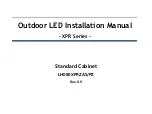
84
Te
chnical Notes
Storage
Turn the camera off when not in use. Check that the power-on lamp is off
before putting the camera away and remove the batteries if the camera will
not be used for an extended period. Do not store the camera with naptha or
camphor moth balls or in locations that:
• are next to equipment that produces strong electromagnetic fi elds, such as
televisions or radios
• are exposed to temperatures below –10 °C (14 °F) or above 50 °C (122 °F)
• are poorly ventilated or subject to humidities of over 60%
To prevent mold or mildew, take the camera out of storage at least once a
month. Turn the camera on and release the shutter a few times before put-
ting the camera away again.
Batteries
• Check the battery level when taking the camera out and replace the batteries if nec-
essary (
6–7). If possible, carry spare batteries when taking pictures on important
occasions.
• Battery capacity tends to decrease on cold days. Be sure that the batteries are fresh
before heading outside to take pictures in cold weather. Keep spare batteries in a
warm place and exchange as necessary. Once warmed, a cold battery may recover
some of its charge.
• Dirt on the battery terminals can prevent the camera from functioning.
• Used batteries are a valuable resource. Please recycle used batteries in accordance
with local regulations.















































